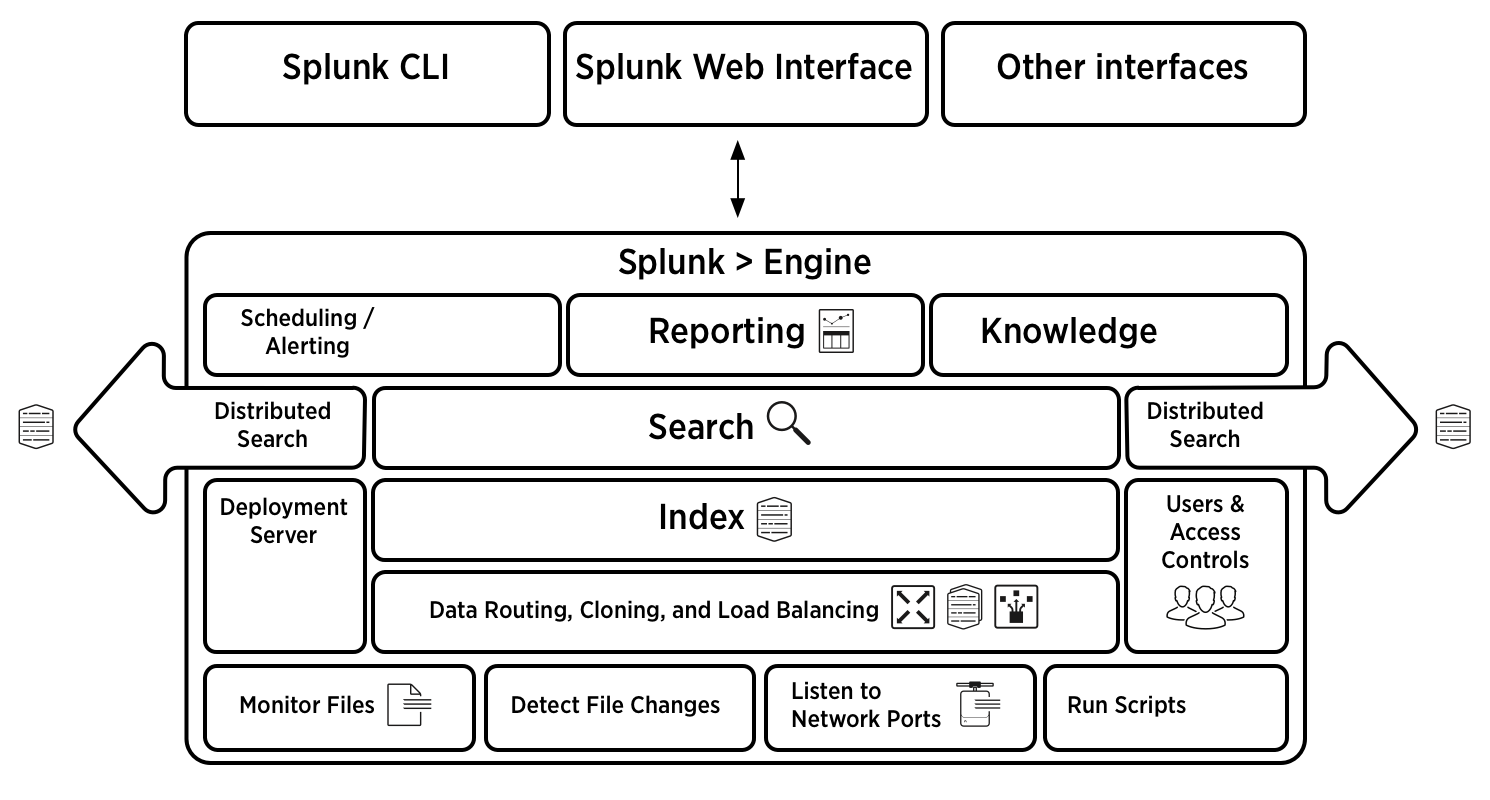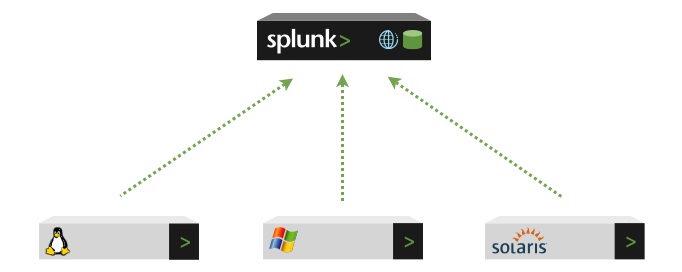Splunk Enterprise architecture——转发器本质上是日志收集client附加负载均衡,indexer是分布式索引,外加一个集中式管理协调的中心节点
Splunk Enterprise architecture and processes
This topic discusses the internal architecture and processes of Splunk Enterprise at a high level. If you're looking for information about third-party components used in Splunk Enterprise, see the credits section in the Release notes.
Splunk Enterprise Processes
A Splunk Enterprise server installs a process on your host, splunkd.
splunkd is a distributed C/C++ server that accesses, processes and indexes streaming IT data. It also handles search requests. splunkd processes and indexes your data by streaming it through a series of pipelines, each made up of a series of processors.
- Pipelines are single threads inside the
splunkdprocess, each configured with a single snippet of XML. - Processors are individual, reusable C or C++ functions that act on the stream of IT data that passes through a pipeline. Pipelines can pass data to one another through queues.
Architecture diagram
注意:负载均衡,副本!
Splunk Architecture
A Bit About Architecture
Splunk is a high performance, scalable software server written in C/C++ and Python. It indexes and searches logs and other IT data in real time. Splunk works with data generated by any application, server or device. The Splunk Developer API is accessible via REST, SOAP or the command line. After downloading, installing and starting Splunk, you'll find two Splunk Server processes running on your host, splunkd and splunkweb.
- splunkd is a distributed C/C++ server that accesses, processes and indexes streaming IT data and also handles search requests. splunkd processes and indexes your data by streaming it through a series of pipelines, each made up of a series of processors. Pipelines are single threads inside the splunkd process, each configured with a single snippet of XML. Processors are individual, reusable C/C++ or Python functions that act on the stream of IT data passing through a pipeline. Pipelines can pass data to one another via queues. splunkd supports a command line interface for searching and viewing results.
- splunkweb is a Python-based application server providing the Splunk Web user interface. It allows users to search and navigate IT data stored by Splunk servers and to manage your Splunk deployment through the browser interface. splunkweb communicates with your web browser via REST and communicates with splunkd via SOAP.

- Splunk's Data Store manages the original raw data in compressed format as well as the indexes into the data. Data can be deleted or archived based on retention period or maximum data store size.
- Splunk Servers can communicate with one another via Splunk-2-Splunk, a TCP-based protocol, to forward data from one server to another and to distribute searches across multiple servers.
- Bundles are files that contain configuration settings including, user accounts, Splunks, Live Splunks, Data Inputs and Processing Properties to easily create specific Splunk environments.
- Modules are files that add new functionality to Splunk by adding to or modifying existing processors and pipelines.
About forwarding and receiving
You can forward data from one Splunk instance to another Splunk server or even to a non-Splunk system. The Splunk instance that performs theforwarding is typically a smaller footprint version of Splunk, called a forwarder.
A Splunk instance that receives data from one or more forwarders is called a receiver. The receiver is usually a Splunk indexer, but can also be another forwarder, as described here.
This diagram shows three forwarders sending data to a single Splunk receiver (an indexer), which then indexes the data and makes it available for searching:







【推荐】国内首个AI IDE,深度理解中文开发场景,立即下载体验Trae
【推荐】编程新体验,更懂你的AI,立即体验豆包MarsCode编程助手
【推荐】抖音旗下AI助手豆包,你的智能百科全书,全免费不限次数
【推荐】轻量又高性能的 SSH 工具 IShell:AI 加持,快人一步
· 记一次.NET内存居高不下排查解决与启示
· 探究高空视频全景AR技术的实现原理
· 理解Rust引用及其生命周期标识(上)
· 浏览器原生「磁吸」效果!Anchor Positioning 锚点定位神器解析
· 没有源码,如何修改代码逻辑?
· 全程不用写代码,我用AI程序员写了一个飞机大战
· MongoDB 8.0这个新功能碉堡了,比商业数据库还牛
· 记一次.NET内存居高不下排查解决与启示
· 白话解读 Dapr 1.15:你的「微服务管家」又秀新绝活了
· DeepSeek 开源周回顾「GitHub 热点速览」